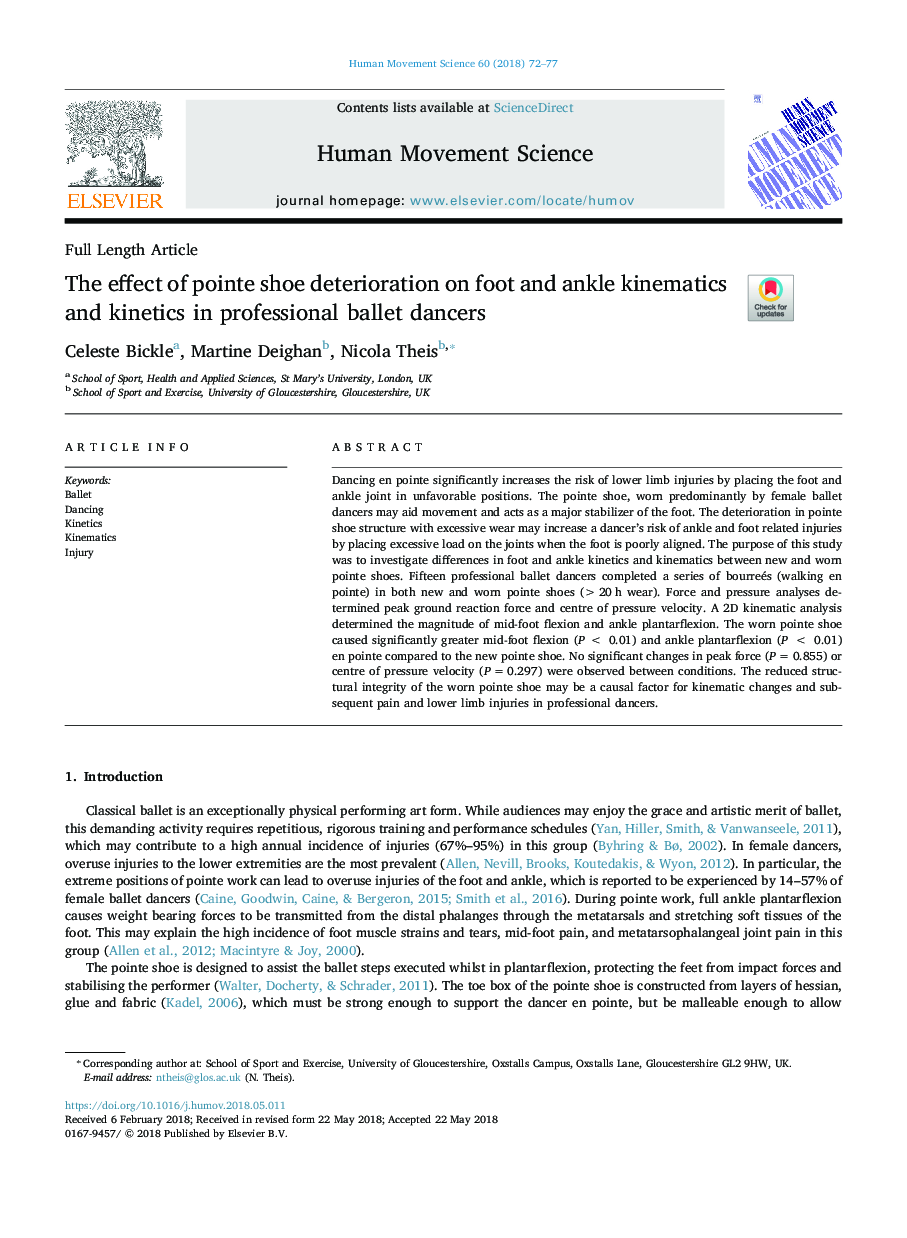| Article ID | Journal | Published Year | Pages | File Type |
|---|---|---|---|---|
| 7290792 | Human Movement Science | 2018 | 6 Pages |
Abstract
Dancing en pointe significantly increases the risk of lower limb injuries by placing the foot and ankle joint in unfavorable positions. The pointe shoe, worn predominantly by female ballet dancers may aid movement and acts as a major stabilizer of the foot. The deterioration in pointe shoe structure with excessive wear may increase a dancer's risk of ankle and foot related injuries by placing excessive load on the joints when the foot is poorly aligned. The purpose of this study was to investigate differences in foot and ankle kinetics and kinematics between new and worn pointe shoes. Fifteen professional ballet dancers completed a series of bourreés (walking en pointe) in both new and worn pointe shoes (>20â¯h wear). Force and pressure analyses determined peak ground reaction force and centre of pressure velocity. A 2D kinematic analysis determined the magnitude of mid-foot flexion and ankle plantarflexion. The worn pointe shoe caused significantly greater mid-foot flexion (Pâ¯<â¯â¯0.01) and ankle plantarflexion (Pâ¯â¯<â¯â¯0.01) en pointe compared to the new pointe shoe. No significant changes in peak force (Pâ¯=â¯0.855) or centre of pressure velocity (Pâ¯=â¯0.297) were observed between conditions. The reduced structural integrity of the worn pointe shoe may be a causal factor for kinematic changes and subsequent pain and lower limb injuries in professional dancers.
Related Topics
Life Sciences
Neuroscience
Cognitive Neuroscience
Authors
Celeste Bickle, Martine Deighan, Nicola Theis,
